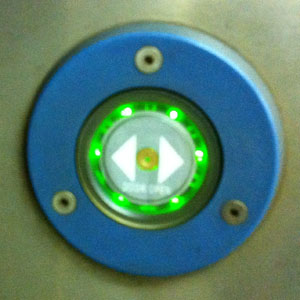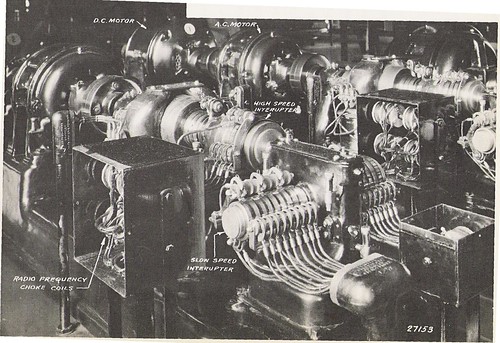
“Modern” Dial Tone
Fifty years ago, when TouchTone service was introduced, the Phone Company established a set of precise frequencies that would be used to create standard sounds for ringback, busy and dial tones.
So-called “Modern” dial tone is a combination of 350Hz and 440 Hz. This clip plays each frequency separately, and then both blended together creating the pleasant harmony of dial tone:
If you look at the waveform of these sounds closely with an oscilloscope or audio editor, here’s what they look like: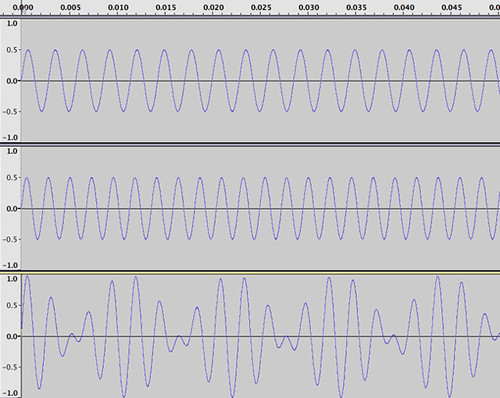
The trace on the top is 350 cycles per second and the one in the middle is 440. In the bottom trace, the two pure tones have been literally added together mathematically to form the harmonic waveform of dial tone; a larger rhythm now encompasses several smaller peaks within.
It is indeed a rather pleasant sound. When first introduced, it was something new and modern and quite literally signaled the future of telephony. From the above, you can see and hear how pure and simple it is.
However, before dial tone was standardized like this, it could sound very different depending on where you were calling from.
GEdney-9 Dial Tone
GEdney-9 was a wonderful panel exchange in New York City. Evan Doorbell’s PhoneTrips.com library has high quality recordings of calls dialed from this central office in the 1970’s. This next clip is a classic example of what is known as “Old City Dial Tone”. For dramatic effect, after about 50 seconds it transitions to another recording of dial tone, timing out; you can hear the panel revertive pulsing in the background as the call is connected to the permanent signal holding trunk. Ultimately, as the line is hung up, rich background sounds can be heard in this very high fidelity recording from Evan’s library:Can you hear how different from “Modern” dial tone it sounds? There’s a lot happening in the background. Here’s a side by side comparison of GEdney-9 dial tone versus “Modern” dial tone:
In the image below, “Modern” dial tone appears in the top trace and GEdney-9 dial tone on the bottom:
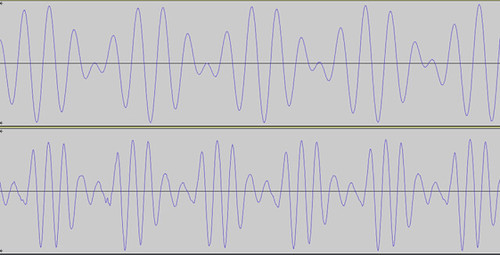
First of all, they’re based on different frequencies, so the the wavelengths are different. But look closely and notice that while the digitally-generated “Modern” tone waves are all perfectly smooth, GEdney-9’s all have slight bits of distortion; like snowflakes, no two are the same. That’s because the real GEdney-9 dial tone was not generated digitally; it came from large, rotating, motor-driven machinery. Background noise from the power supplies and the electromechanical switching equipment in constant operation added another, rich layer of character to the sound. You can really hear that influence of the background power supply noise when listening to the two side-by-side.
—from PanelSwitchman‘s collection on Flickr.
This is the type of rotating, electromechanical, tone generator and ringing machine that the GEdney-9 central office would have used.
Synthetic GEdney-9 Dial Tone
I must admit, at first I didn’t think it could be possible to re-create a sound similar to Old City dial tone with digital electronics. I read that the old dial tone frequencies were a combination of 120Hz and 600Hz, so I tried blending them in the same way I did for “Modern” dial tone. Here’s what that sounds like:Which sounds absolutely nothing like any City dial tone I ever heard. Yuck!
Chuck Richards’ City Dial Tone
But then, I heard a synthesized dial tone, ingeniously created by switchgear collector, Chuck Richards that sounds remarkably close to authentic Old City dial tone. Here’s an actual call I made through his electromechanical step-by-exchange. You can hear his City dial tone and also a double-ringback tone. (I wasn’t expecting him to answer!)And now, a side-by-side comparison of Chuck’s dial tone followed by GEdney-9 dial tone:Well, I’m very impressed and I humbly take back my previous skepticism.
Chuck sent me the drawings of his circuit design. It shows the pattern of the GEdney-9 waveform that he based it on. I’m amazed at how it matches the waveform on the images from my computer (above), and very impressed at how good it sounds!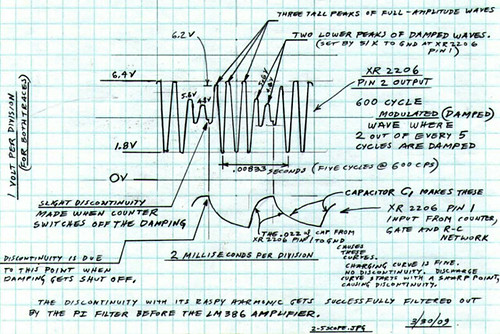
Here’s their waveforms. The top trace is Chuck Richards’ dialtone, with GEdney-9 on the bottom:
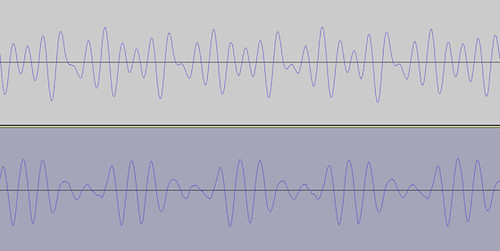
Chuck certainly did a great job of matching the pitch and some other sound qualities of GEdney-9, even though the waveforms appear different. Note that Chuck’s waveform is almost as smooth as “Modern” dial tone, and doesn’t have the little “snowflake” distortions that roughen up GEdney-9’s. Nonetheless, it’s a much better imitation that I ever thought would be possible!
Please read more about Chuck Richards‘ equipment and ingenious tone generator, (including an explanation of why my attempt to make City dial tone was all wrong ) at: ElmerCat.org/Phone/Chuck
Old Crossbar 5 Dial Tone
CDO Dial Tones
Other Dial Tones
